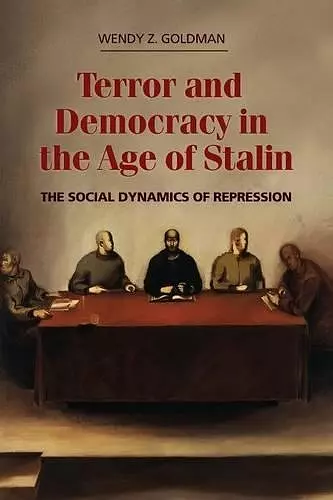Terror and Democracy in the Age of Stalin
The Social Dynamics of Repression
Format:Paperback
Publisher:Cambridge University Press
Published:27th Aug '07
Currently unavailable, and unfortunately no date known when it will be back
This paperback is available in another edition too:
- Hardback£90.00(9780521866149)

The book shows how ordinary people moved toward madness and self-destruction during the Great Terror.
The first book devoted exclusively to popular participation in the 'Great Terror', a period in which millions of people were arrested, interrogated, shot, and sent to labor camps. By using new, formerly secret archival sources, the book shows how ordinary people moved in clear stages toward madness and self-destruction.Terror and Democracy in the Age of Stalin is the first book devoted exclusively to popular participation in the 'Great Terror', a period in which millions of people were arrested, interrogated, shot, and sent to labor camps. The book shifts attention from the machinations of top Party leaders to the mechanisms by which repression engulfed Soviet society. In the unions and the factories, repression was accompanied by a mass campaign for democracy. Party leaders urged workers to criticize and remove corrupt and negligent officials. Workers, shop foremen, local Party members, and union leaders adopted the slogans of repression and used them, often against each other, to redress long-standing grievances, shift blame for intractable problems in production, and advance personal agendas. Repression quickly became a mass phenomenon; not only in the number of victims it claimed, but in the number of perpetrators it spawned. Using new, formerly secret archival sources, Terror and Democracy in the Age of Stalin takes us into the unions and the factories to observe how ordinary people moved through clear stages toward madness and self-destruction.
“More than any study I know, Goldman’s book brings dramatically to life the day to day reality of the Stalinist Terror. Her accounts of factory meetings are so vivid that you think you are actually there, listening to real people debating, arguing, and betraying one another. Even more important, the book will force us all to rethink our understanding of Stalinism and the dynamics of state repression. This book is a remarkable achievement.” – Donald Filtzer, University of East London
“This is an important study not only for Soviet historians but for historians interested in labor history, social history, and modern Europe. It will also be of interest to political scientists and sociologists interested in political violence, popular mobilization, and populist components of terror. Goldman captures the complexity of the 1930s, and her book elegantly tells a story that, like real life, is not easy to tell. Avoiding simplistic approaches, she provides a realistic account characterized by confusion, unintended consequences, shifting alliances, and chaos. In doing so, she makes extensive and skillful use of heretofore unexploited and inaccessible archival collections. She uses these unique documents to tell the story of terror and populist ‘democracy’ in the party organizations and factories of Moscow.” - J. Arch Getty, Professor of History, University of California, Los Angeles
“What does it mean to live inside the Great Terror? Wendy Goldman's richly detailed study adds a new important dimension to our debates on the nature of Stalin's dictatorship in general and on mechanics of the terror in particular.” - Oleg Khlevniuk, author of The History of the Gulag: From Collectivization to the Great Terror
“In a vivid, analytical narrative Wendy Goldman explores the paradox of Stalin's paroxysm of terror of the late 1930s and the rhetoric – as well as practices – of democracy that accompanied it. Rather than simply a top-down policy of repression or the spontaneous eruption of resentment and revenge from below, the Great Purges are shown to have metastasized from a campaign against party oppositionists into mass arrests and killings of activists, kulaks, and workers. Democratic slogans, even multi-candidate secret ballot elections, were employed to mobilize the rank-and-file in an effort to expel old leaders and ‘revive’ petrified bureaucratic institutions. Professor Goldman gives us the most compelling account to date of how victims and victimizers unwittingly collaborated and consequently destroyed hundreds of thousands of their countrymen and fatally wounded the first ‘socialist’ experiment.” -Ronald Grigor Suny, Charles Tilly Collegiate Professor of Social and Political History, The University of Michigan, and Professor Emeritus of Political Science and History, The University of Chicago
"This important, readable book sheds light on a critical phase in Soviet history." Brian Bonhomme, Youngstown State University, The Russian Review
"[The] book, which has the great merit of reminding readers that there was an important social dimension to the Terror, is convincingly argued and abounds in many vivid details. It will be of value to anyone interested in the Stalin years, in particular the institutionalization of the Terror, labour history, popular mobilization, and political violence." Canadian Journal of History, J.-Guy Lalande, St. Francis Xavier University
ISBN: 9780521685092
Dimensions: 229mm x 152mm x 16mm
Weight: 390g
286 pages